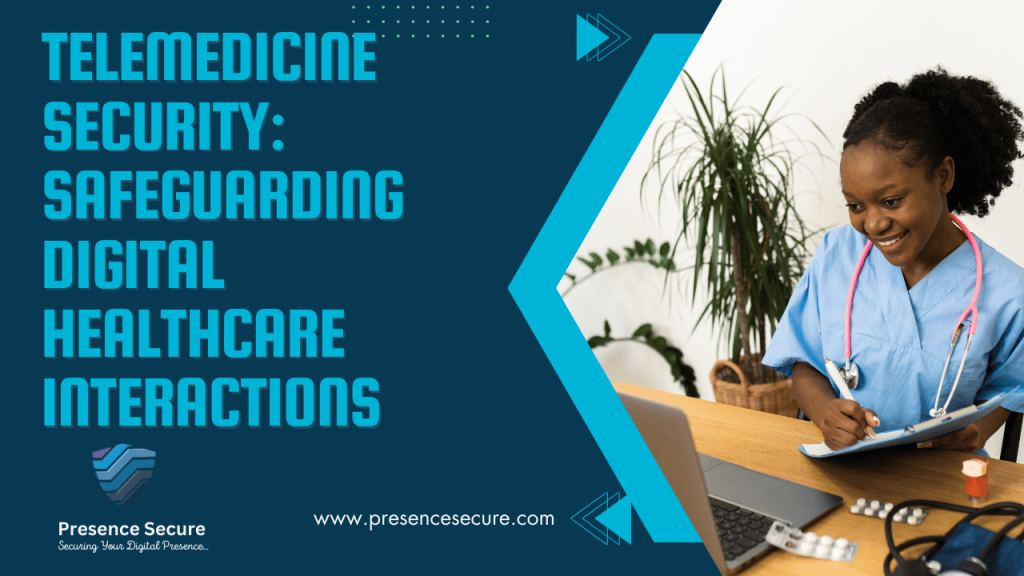Picture this: you’re seated comfortably at home, facing your computer screen. Today, instead of rushing to a clinic, you’re about to consult with your doctor through a virtual telemedicine appointment. It’s a scene becoming increasingly common—a blend of modern technology and healthcare convenience. Telemedicine has transformed how we access medical care, offering the ability to connect with healthcare providers remotely, from routine check-ups to managing chronic conditions.
However, amidst the convenience lies a critical concern: the security of these digital healthcare interactions. Imagine the sensitive information exchanged during these virtual visits—your medical history, symptoms discussed in detail, and treatment plans. Ensuring the confidentiality and integrity of this data is not just about protecting personal privacy, but also maintaining trust in telemedicine as a reliable and secure healthcare option. As we embrace the benefits of telemedicine, the need for robust security measures becomes more pressing than ever before.
Let’s explore strategies to enhance the security of telemedicine:
- Encryption and Secure Transmission: Implementing strong encryption protocols ensures that patient data remains confidential during transmission between healthcare providers and patients. Secure communication channels protect against unauthorized access and interception.
- User Authentication: Employing multi-factor authentication (MFA) verifies the identity of both patients and healthcare providers before accessing telemedicine platforms. This extra layer of security mitigates the risk of unauthorized access to sensitive health information.
- Data Privacy Policies: Clear and comprehensive privacy policies inform patients about how their data is collected, used, and stored during telemedicine consultations. Transparency builds trust and ensures patients are informed about their rights regarding their personal health information.
- Endpoint Security: Securing endpoints, such as computers and mobile devices used for telemedicine, with antivirus software and regular updates protects against malware and other cyber threats that could compromise patient data.
- Regulatory Compliance: Adhering to regulatory frameworks, such as HIPAA (Health Insurance Portability and Accountability Act) in the United States, GDPR (General Data Protection Regulation) in Europe, or Nigeria Data Protection Regulation (NDPR) in Nigeria, ensures that telemedicine platforms meet legal standards for protecting patient privacy and data security.
- Training and Awareness: Educating healthcare providers and staff about the risks of cyber threats and best practices for telemedicine security enhances their ability to identify and respond to potential vulnerabilities effectively.
- Incident Response Plan: Developing a robust incident response plan prepares healthcare organizations to quickly detect, respond to, and recover from cyber security incidents that may impact telemedicine services. This proactive approach minimizes disruptions and protects patient care.
Telemedicine stands out as a transformative force, offering unprecedented access to medical expertise from anywhere at any time. This digital revolution has not only enhanced convenience for patients but has also proven invaluable in delivering timely care, particularly in remote areas or during times of crisis. However, alongside these benefits, the importance of safeguarding the security and privacy of telemedicine interactions cannot be overstated.
As we navigate the complexities of digital healthcare, it is crucial to prioritize robust security measures to protect sensitive patient information. Encryption, secure transmission protocols, and stringent authentication processes are essential pillars in fortifying telemedicine platforms against cyber threats. Moreover, adherence to regulatory standards like HIPAA ensures that patient privacy rights are respected and upheld.
Educating healthcare providers and patients alike about cyber security best practices is equally vital. Awareness empowers individuals to recognize potential risks and take proactive steps to mitigate them, fostering a culture of vigilance in digital healthcare settings. Furthermore, the development and implementation of comprehensive incident response plans are essential to swiftly address and mitigate any security breaches that may occur.
In conclusion, while telemedicine continues to revolutionize healthcare delivery, its success hinges on maintaining the trust and confidence of patients through robust security practices. By embracing technology while prioritizing patient privacy, healthcare providers can ensure that telemedicine remains a safe, reliable, and accessible option for delivering quality healthcare in the digital age. As we forge ahead, the collaboration between healthcare professionals, technology experts, and policymakers will be pivotal in shaping a secure and resilient future for telemedicine.
Faith Kajotoni Peter


